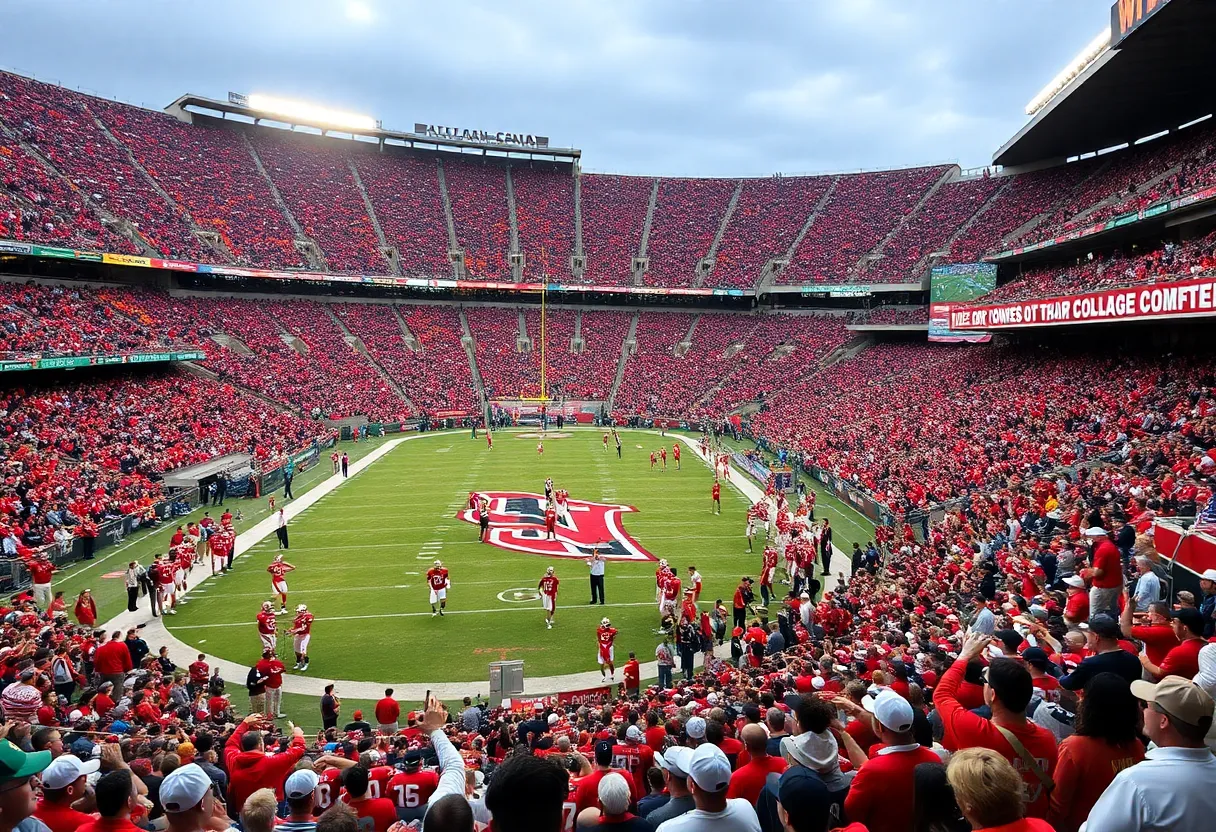Oklahoma City, October 12, 2025
Developers remain committed to the Legends Tower project in Oklahoma City, which aims to surpass existing U.S. skyscrapers by reaching over 1,900 feet. Despite skepticism around funding and feasibility, city officials express cautious optimism about the potential economic benefits the mixed-use development could bring. The tower is set to include luxury residential units, office spaces, hotels, and retail outlets, although challenges related to financing and urban planning persist.
Legends Tower Oklahoma City: Developers Push Forward Amid Doubts
Oklahoma City, OK – Developers behind the ambitious Legends Tower project in Oklahoma City have reaffirmed their commitment to building what would be the tallest structure in the United States, reaching over 1,900 feet. Despite widespread skepticism regarding funding and overall feasibility, the team vows to move ahead with plans that could transform the city’s skyline and economy.
The proposed Legends Tower would surpass all existing U.S. skyscrapers, including New York City’s One World Trade Center at 1,776 feet. Positioned in the heart of downtown Oklahoma City, the mixed-use development aims to include luxury residential units, office spaces, hotels, and retail outlets. Proponents highlight the project’s potential to attract investment and boost local commerce, positioning it as a landmark that could elevate Oklahoma City’s status on the national stage.
City officials have expressed cautious optimism about the venture. They see it as an opportunity for significant economic growth, potentially creating thousands of jobs during construction and operation phases. However, they emphasize the need for thorough planning to ensure the project aligns with urban infrastructure and zoning regulations. Recent meetings between developers and municipal leaders focused on timelines and preliminary approvals, though no final green light has been issued.
Challenges and Skepticism Surrounding the Project
Skeptics, including urban planning experts and local economists, question the project’s viability. Key concerns revolve around securing sufficient funding in a post-pandemic real estate landscape where high-rise developments face heightened risks. The tower’s height alone presents engineering challenges, requiring advanced materials and seismic considerations given Oklahoma’s occasional earthquake activity. Critics also point to the city’s relatively modest population and economic base compared to coastal metropolises, wondering if demand for such expansive space exists.
Financial transparency remains a focal point. While developers have outlined a multi-billion-dollar budget sourced from private investors and potential public incentives, details on commitments are sparse. Past ambitious projects in other cities have faltered due to similar funding gaps, leading some to view Legends Tower as overly optimistic. Environmental impact assessments are underway, addressing how the structure might affect local traffic, utilities, and green spaces.
Background on Legends Tower Vision
The Legends Tower concept emerged several years ago as part of Oklahoma City’s broader revitalization efforts. The city has seen steady growth in recent decades, with investments in energy, aerospace, and tech sectors driving population increases. Proposing a supertall building fits into this narrative of ambition, aiming to symbolize progress and innovation. Early designs feature sustainable elements like energy-efficient systems and public observation decks to draw tourists.
Historically, Oklahoma City has pursued large-scale developments, such as the Devon Energy Center, currently the state’s tallest at 844 feet. Legends Tower would dwarf this, requiring federal approvals for aviation safety due to its proximity to Will Rogers World Airport. Community input sessions have been held, with mixed reactions from residents who appreciate the potential prestige but worry about construction disruptions and rising living costs.
If realized, the project could set a precedent for Midwestern cities challenging traditional skyscraper hubs. Developers plan to break ground within the next two years, pending financing and permits. For now, the commitment from the project team keeps the conversation alive, balancing bold aspirations with practical hurdles.
Potential Economic Impacts
Supporters argue that Legends Tower could inject billions into the local economy. Construction alone might employ thousands, spanning several years and stimulating related industries like manufacturing and hospitality. Once complete, the tower’s amenities could host events, conferences, and cultural activities, enhancing tourism. Real estate values in surrounding areas may rise, though this could also strain affordability for current residents.
City leaders are exploring partnerships to mitigate risks, including tax incentives tied to job creation milestones. While the path forward remains uncertain, the project’s momentum underscores Oklahoma City’s evolving identity from an oil-driven hub to a diverse urban center.
FAQ
What is the planned height of Legends Tower?
The Legends Tower in Oklahoma City is planned to stand over 1,900 feet, making it the tallest building in the U.S.
Who is committed to building Legends Tower?
Developers of the ambitious Legends Tower in Oklahoma City vow to proceed with plans for the tallest building in the U.S.
What concerns do skeptics have about the project?
Skeptics question funding and feasibility of the Legends Tower project.
How do city officials view the Legends Tower?
City officials express cautious optimism for the economic boost from Legends Tower.
What would Legends Tower include?
The Legends Tower would be a mixed-use development with luxury residential units, office spaces, hotels, and retail outlets.
Key Features of Legends Tower
Below is a table outlining the key features of the proposed Legends Tower project in Oklahoma City.
| Feature | Description |
|---|---|
| Height | Over 1,900 feet, tallest in the U.S. |
| Use | Mixed-use: residential, offices, hotels, retail |
| Location | Downtown Oklahoma City |
| Developer Commitment | Vow to proceed despite skepticism |
| City Stance | Cautious optimism for economic boost |
| Main Challenges | Funding and feasibility concerns |




